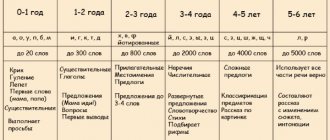Anatomical and physiological mechanisms of speech sound formation
Basic (key) concepts : central section of the speech apparatus, peripheral section of the speech apparatus, speech-auditory analyzer, speech-motor analyzer, innervation, speech breathing, phonation, articulation.
Speech is a complex motor act. It is carried out as a result of the joint coordinated activity of the central and peripheral parts of the speech apparatus.
Each of the central brain structures performs a specific control function in the process of speech production and perception.
cortical center is the central section of the speech-hearing analyzer. It is located in the temporal cortex of the left hemisphere of the brain. In this department, the analysis of sounding speech is carried out - determining the acoustic features of sounds, distinguishing them, analyzing the number and order of sounds in a word.
The central link of the speech motor analyzer - Broca's center , located in the posterior third of the inferior frontal gyrus of the cortex of the left hemisphere, ensures the motor organization of speech. Here motor speech programs are organized - the possibility, nature, and sequence of movements of the speech organs are determined; a series of nerve impulses are created that travel to the speech muscles; the ability to smoothly transition from one movement to another is programmed. In addition, this part of the brain receives, analyzes and differentiates kinesthetic sensations from the position and movement of the speech organs, which allows a person to control the correctness of his speech.
Important functions in the regulation of speech activity are performed by subcortical structures . Thus, thanks to part of the subcortical nuclei , located in the thickness of the white matter of the cerebral hemispheres, such unconditional reflex vocal reactions as laughter, crying, moaning, and screaming are carried out. These innate pre-speech reflexes are the basis for the formation of voluntary speech skills. Another part of the subcortical nuclei is part of the limbic-reticular complex , the functioning of which allows you to regulate emotions, motivation, and activate attention.
The subcortical nuclei, included in the structure of such a complex functional formation as the extrapyramidal system , provide regulation and redistribution of the tone of speech muscles, create background muscle tone, thus ensuring the smoothness and rhythm of speech movements, their gradual automation.
The subcortical-cerebellar nuclei and their pathways are involved in the implementation of such prosodic components of speech as pace and smoothness, intensity and pitch of the voice, emotional expressiveness of speech, which determine the quality of the prosodic components of the pronunciation side of speech.
The functions of another structure of the brain - the cerebellum , are to ensure coordination and synchrony of movements of the organs of articulation, vocal and respiratory sections of the speech apparatus, as well as regulation of their muscle tone.
The brain stem is one of the most ancient brain structures in phylogenetic terms. It contains vital centers that regulate cardiac activity, breathing, autonomic reactions, innate involuntary reflexes of sucking, swallowing and some others. In addition, it includes the paired nuclei of the cranial nerves (facial, trigeminal, hypoglossal, glossopharyngeal, vagus, etc.) and their conductive sensory and motor pathways, which innervate the peripheral parts of the speech apparatus.
Thus, each of the central brain structures performs specific functions in controlling speech movements. Their violation, as a rule, leads to specific speech disorders.
The peripheral part of the speech apparatus, connected to the central , ensures the process of direct motor realization of oral speech and includes three interconnected parts - respiratory, vocal and articulatory.
The respiratory part of the speech apparatus includes the nasal and oral cavities, pharynx, larynx, trachea, bronchi, lungs, chest, intercostal muscles and diaphragm. As a result of their work, physiological and speech breathing is carried out, which is the energetic basis of oral speech. Ontogenetically, speech breathing is formed on the basis of physiological breathing. These types of breathing differ significantly from each other in their characteristics.
Thus, during physiological breathing, inhalation is carried out through the nasal cavity as a result of contraction of the intercostal muscles and the diaphragm. Exhalation also occurs through the nose, relatively passively due to the relaxation of the corresponding muscles. The duration of physiological inhalation and exhalation is almost the same. These features make it possible to ensure the process of gas exchange in the lungs as efficiently as possible.
Breathing during speech is called speech (phonation). It has a number of specific features. Thus, speech inhalation, unlike physiological inhalation, is carried out mainly through the oral cavity. This is due to the fact that during speech the need for the volume of inhaled air increases significantly, since the duration of exhalation directly affects the duration of the speech utterance. The greater the volume of inhaled air and, accordingly, the longer the exhalation, the greater the volume of speech material that can be pronounced without losing semantic accents. In addition, during speech there is a need to quickly replenish air, which is necessary both for gas exchange processes and for maintaining subglottic pressure. Nasal inhalation cannot satisfy this need, since the nasal passages are sufficiently long and narrow. Inhalation through the oral cavity allows for rapid, silent intake of a large volume of air in a minimum amount of time.
The second feature of speech breathing is that exhalation is carried out primarily through the oral cavity. This ensures the pronunciation of most speech sounds (except for nasal [m], [мь], [н], [н]), which are pronounced with active participation in the articulation of the organs of the oral cavity. This leads to the need to change the direction of the exhaled air stream from the nasal towards the oral cavities.
The third feature of speech breathing is the active nature of both inhalation and exhalation. During speech, it becomes necessary to control the duration of exhaled air flow. Its rapid loss will lead to the impossibility of further pronouncing a speech utterance. In this regard, during exhalation, the activity of the muscles of the diaphragm and chest increases significantly, which allows you to control air flow, distributing it to pronounce an entire speech utterance or its intonation and logically completed semantic segment (syntagma).
The same feature determines a significant change in the ratio of the duration of inhalation and exhalation during speech. Due to the active voluntary regulation of contraction of the respiratory muscles, speech exhalation is 7-8 times longer than inhalation. Thus, the mechanism of speech breathing creates the energetic basis for the implementation of oral speech.
The main organ of the vocal (phonation) department of the speech apparatus is the larynx and the vocal folds located in it. Its main function is the formation of voice - phonation. Outside of speech, the vocal folds are relaxed and moved apart. This position ensures the free passage of air through the larynx, necessary for physiological breathing.
The mechanism of voice formation is closely related to the implementation of speech exhalation. So, in the process of producing sonorous speech, the muscles of the larynx contract, which leads to tension and bringing the vocal folds closer together - a glottis is formed. Under the influence of the pressure of the exhaled air stream, the elastic vocal folds begin to oscillate, producing sound waves. Their volume and pitch depend on the amplitude and frequency of vibration of the vocal folds. Thus, the primary sound of the human voice is formed, which later, as a result of its amplification and changes in the resonator cavities of the body, acquires an individual color (timbre).
The main function of the articulatory section of the speech apparatus is to carry out the process of directly pronouncing speech sounds - articulation. Its implementation becomes possible under the condition of the normal anatomical structure and functioning of a number of articulatory organs, which include the tongue, lips, hard and soft palate, pharynx, nasal and oral cavity, lower jaw, and dental system.
The tongue is a massive muscular organ, conventionally consisting of a tip, sides, back and root. Its position in the oral cavity determines the method and place of formation of speech sounds. The quality of movements of the tongue muscles mainly affects the nature of the pronunciation of consonant sounds.
The lips limit the oral cavity in front and are a movable muscular organ involved in changing the configuration of the oral cavity and the nature of the exhaled air stream. The quality of lip muscle movements affects the pronunciation of vowel sounds, as well as speech intelligibility.
In general, movements of the lips, cheeks, lower jaw, and forehead muscles characterize facial expressions. Facial expressions - (from the Greek mimikos - imitative) - a set of movements of the facial muscles that accompany emotions and are their external stimulus. The functioning of facial muscles is ensured by the activity of the subcortical nuclei and motor nerves.
The lower jaw is the bottom of the oral cavity and ensures that its configuration changes during speech. Its movements, along with the movements of the lips, determine the quality and intelligibility of speech utterances.
The anatomical features of the dental system contribute to the formation of appropriate barriers to the exhaled air stream and determine the articulatory-acoustic features of consonant sounds.
The hard palate is a bony septum that separates the oral cavity from the nasal cavity, passing into the soft palate at the back. During physiological breathing, the soft palate is relaxed and partially covers the entrance to the oral cavity from the pharynx. During speech, it tenses, deviates upward and forms a velopharyngeal closure with the posterior wall of the pharynx protruding forward. As a result of this closure, the passage into the nasal cavity is closed, and the exhaled air rushes into the oral cavity, providing the normative oral timbre for pronouncing most speech sounds (except for [m], [m], [n], [nn]).
Thus, the external implementation of speech activity becomes possible under the condition of well-coordinated, coordinated work of both the central and peripheral sections of the speech apparatus, which includes the respiratory, vocal and articulatory sections. They, in turn, perform phonatory, phonation and articulatory functions.
Test questions and assignments:
1. Determine the functional significance of the central part of the speech apparatus for the implementation of the pronunciation aspect of speech.
2. Determine the functional significance of the peripheral part of the speech apparatus for speech activity.
3. Make a comparative description of the respiratory, vocal and articulatory sections of the speech apparatus (name, structure, functional purpose).
4. Reveal the specifics of the mechanism of speech breathing.
5. Describe the mechanism of voice formation.
6. Characterize the mechanism of formation of vowels and consonants.
Origin and propagation of sound
Table of contents
| Acoustics of the vocal apparatus |
| Origin and propagation of sound |
| Tone and noise sounds |
| Pitch |
| Behavior of waves when encountering obstacles |
| The power of sound |
| Sound timbre |
| Resonance phenomenon |
| Resonators and soundboards |
| Sound of the glottis |
| Formants |
| The role of the nasal resonator |
| Vibrato |
| Sound emission |
| The vocal apparatus is a kind of mouthpiece |
| Radiation direction |
| Interconnected system |
| Flight of the singing voice |
In acoustics, sound refers to the propagation of vibrations, i.e., waves, in an elastic medium.
Since we will talk about singing and speech, and a person speaks and sings in the air, we can say that the sound of a voice is a vibration of air particles, propagating in the form of waves of condensation and rarefaction. The source of these waves in musical instruments is usually some vibrating elastic body: strings, soundboards, tense lips. From them sound waves travel in all directions. Sound can travel through different media. When a person speaks, his voice not only passes through the airways into the outer space, but also spreads through the internal tissues of the body, causing the chest and head to tremble. Sound also penetrates through solid media: through walls and ceilings, closed windows and doors, etc. etc. Fig. 1. Scheme of string vibration and wave formation. The dotted line is a graphic representation of the waves being formed: a) the string is pulled, but the air environment is still calm; b) the string was released, the first wave of condensation appeared, and a vacuum formed in the place where it was; c) the formation of a second wave; going in the opposite direction, and a second rarefaction; d) and e) the formation of subsequent waves of condensation and rarefaction. The graph gives a periodic curve - a sinusoid.
The source of the singing voice is the human vocal cords, which, being brought together and tense, begin to vibrate. This is the reason for the occurrence of periodic condensations and rarefaction passing between them due to the increased subductal pressure of the air stream. Sound waves, born in the larynx, spread in all directions: through the tissues surrounding the larynx, and down and up the airways. Rice. 2. Thus, they only partially exit into the external space through the oral opening. This means that only part of the sound energy generated in the larynx exits through the mouth opening and, spreading in the environment surrounding the singing or speaking person, eventually reaches the listener’s ear. Speaking about the propagation of the sound of a voice, we will need to dwell on two points: on the behavior of sound in the singer’s vocal tube, i.e., inside the body, and on phenomena associated with the behavior of sound coming out of the mouth or, as they say in acoustics, with sound emitted from the mouth opening into the external space.
Rice. 2. Diagram of the propagation of sound originating in the larynx. Sound spreads in all directions through tissues and air cavities. White lines on a black silhouette depict sound waves propagating inside the body and practically not reaching the outside space. Black solid lines depict that part of the sound energy, those waves that travel along the airways and are emitted into the outside environment.It is these waves that reach the listener's ear.
As we have already mentioned, waves of condensation and rarefaction propagate in an elastic medium, scattering in all directions from the source of oscillations. Rice. 3. In this case, the particles of the medium do not run along with the wave, but only oscillate, transmitting vibration
Rice. 3. Diagram of the formation of waves on water and their graphic representation. Wavelength is the distance between adjacent waves. Amplitude is the range of oscillations from the neutral position (level). to your neighbors. When sound, for example, penetrates a wall, its particles transmit vibrations without moving. A leaf floating on water, raised and lowered by a passing wave, does not run with it, but only oscillates. The same thing happens in the air - its particles do not run with the wave. The movement of the air, if it is not excessively fast and at short distances, on the order of 10-20 meters, does not significantly affect the propagation of traveling waves. A small wind, even if it blows in the direction opposite to the person speaking, will not prevent sound waves from reaching the ear of the interlocutor. Only a very strong wind carries sounds to the side. Thus, air is only a transmitter of sound vibrations and sound travels through it, depending little on the direction of its movement.
Rice. 4. Diagram of the distribution of sound energy over an area four times larger when the distance from the sound source is twice as large
We touched on this issue because in vocal pedagogy there is a term “voiced breathing”, which is advised to be “directed” to one or another part of the oral cavity, to the lips, to the nose, etc. You should always remember that sound travels in the air, enclosed in the voice tube according to acoustic laws. The air flows through it following other, aerodynamic laws, i.e. “sounded breathing” as a special unified substance does not actually exist. In fact: after all, everyone can say a few words not while exhaling, as usual, but while inhaling, into themselves, and, despite this, the words will be heard. The sound produced during inhalation will still travel through the extension tube and out of the mouth, despite the fact that the air will flow in the opposite direction, being sucked into the lungs. The movement of the air jet should always be considered separately from the movement of sound waves. Propagating from the source of vibrations in all directions, the sound greatly decreases in strength with increasing distance. The decrease in force occurs in inverse proportion to the square of the distance. This pattern is very unfavorable for the singer, since he wants to be well heard.




